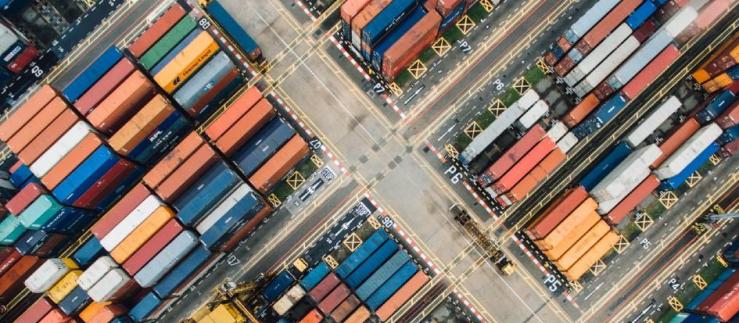We have all experienced first-hand the huge impact that official measures to combat COVID-19 can have on our movements and usual routines and schedules. Many of us have had to change or cancel travel plans, the routes we take, visits and much more besides because, for example, borders were closed or airports and other travel hubs have been unable to maintain regular operations.
What is restrictive and stressful in private life can have massive financial consequences for manufacturers and their suppliers. When, for instance, contact restrictions mean that entire shiploads cannot be loaded at the scheduled port of destination for onward transportation by rail or truck, alternatives have to be found fast, which in turn can result in substantial additional costs given the limited options available.
It is even worse if goods have to remain where they are due, say, to a border closure. The potential consequences are obvious as regards perishable goods. In the case of components which would need to arrive at their destination according to a precise schedule, operational interruptions can occur that not only cause direct financial damage but may also result in reputational harm and the loss of follow-up orders.
Create transparency
The huge increase in the complexity of today's supply chains poses one of the biggest challenges in terms of managing the primary, secondary and sometimes even tertiary suppliers involved. One of the basic prerequisites of supply chain risk management is a precise knowledge of the identity, quality standards and (post-)production capacity of the companies concerned. In the context of the factors described, the pandemic has, however, demonstrated how important it is also to be meticulously familiar with the production sites and the numerous transport routes.
Brokers and insurers can help together
Only for a very small number of manufacturers it is worthwhile investing in widescale systems for globally monitoring the availability and safety of transport routes, fluctuations in load handling speeds, and other key factors.
This is where working with the right brokers and insurers – as well as having actual insurance cover – can contribute to avoiding (or at least minimising) damage from the outset.
Specialised transport insurers have the necessary know-how and technical means to help customers with an analysis of their specific risks and to make concrete recommendations. Specialised brokers, on the other hand, can ensure that this expertise is made available to them when putting together the respective coverage for their customers.
Reduce weak spots and excessive dependencies
A risk analysis of supply chains should always focus in part on the dependence on suppliers from a specific geographic region. If, for example, the production sites of both the main and the alternative supplier are located in the same country, the lack of flexibility caused by any lockdown imposed there can lead to the consequences described above. Even in the case of contractually performed production (e.g. by automated manufacturing processes) deliveries may be delayed or even cancelled if logistics centres are suddenly no longer accessible. These are just two of the many scenarios that can be avoided with sufficient transparency regarding potential weak points.
Countless customers made adjustments after the outbreak of the pandemic and are prompted by risk strategy considerations to rely more heavily on local or regional suppliers than on their counterparts in the Far East, even if this course of action may spell higher production costs. This approach is certain to prove positive given the present enormous increase in transport costs, which are likely to remain high for the foreseeable future owing to a lack of options.
State-of-the-art technologies
Even (and especially) in times of contact and travel restrictions, the use of state-of-the-art technologies allows risk engineers to continually support customers in recording and evaluating their risks, even though facility visits, for instance, are not possible.
Large volumes of risk data from the customer's documentation and diverse public sources can be processed and evaluated using machine learning in order also to eliminate less obvious risks early or react to changes. Networked technologies can also help to ensure a timely response to incidents by fitting transported goods with sensors that continually deliver status reports on their location and condition.
The response itself can also be triggered using IT-based procedures – both current and in development (blockchain) – in a predetermined (partly) automated form when defined factors occur. Nevertheless, despite all the technical support, direct interaction between customers, brokers and insurers is still the key to securing supply chains that run as smoothly as possible.






